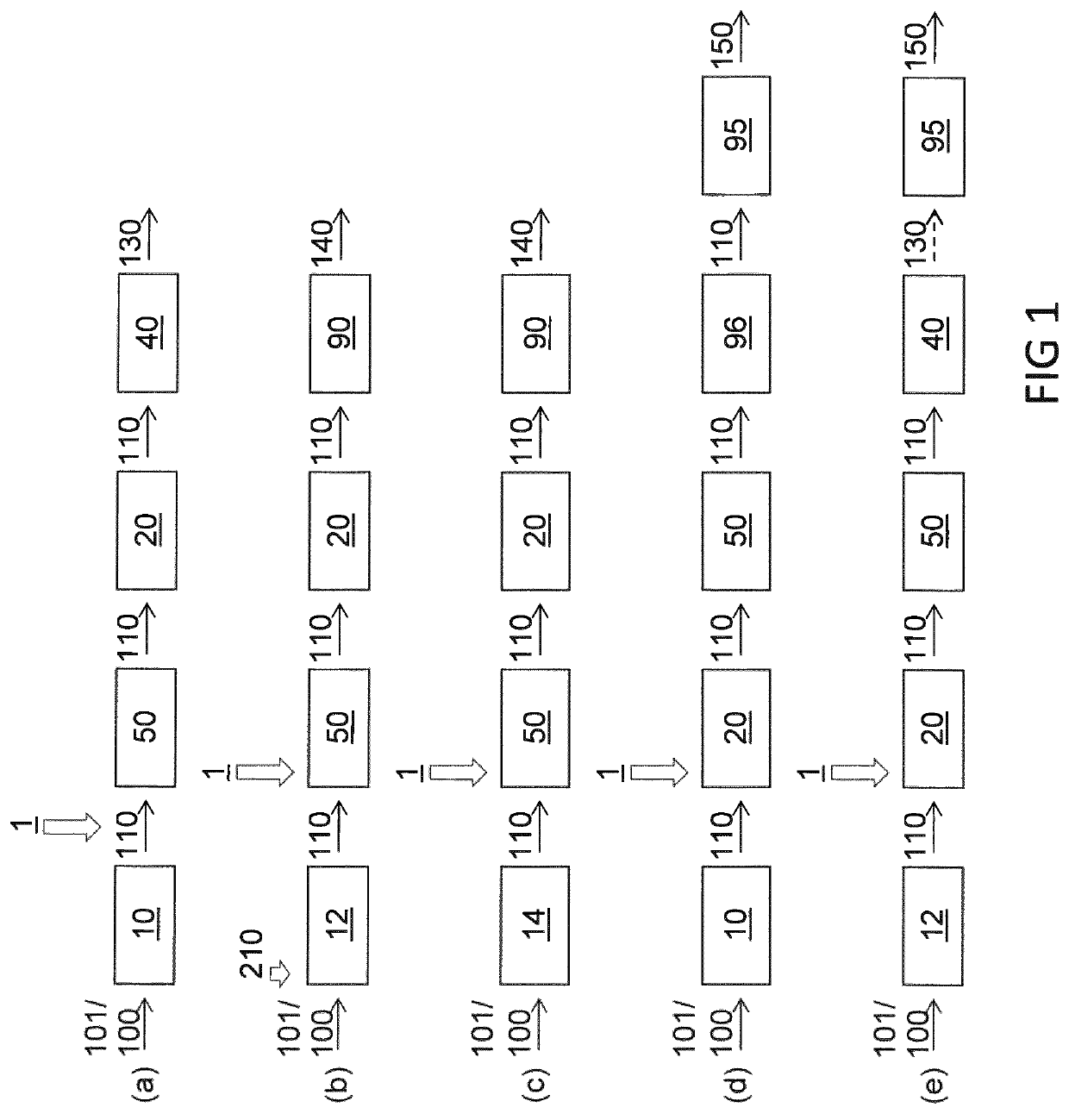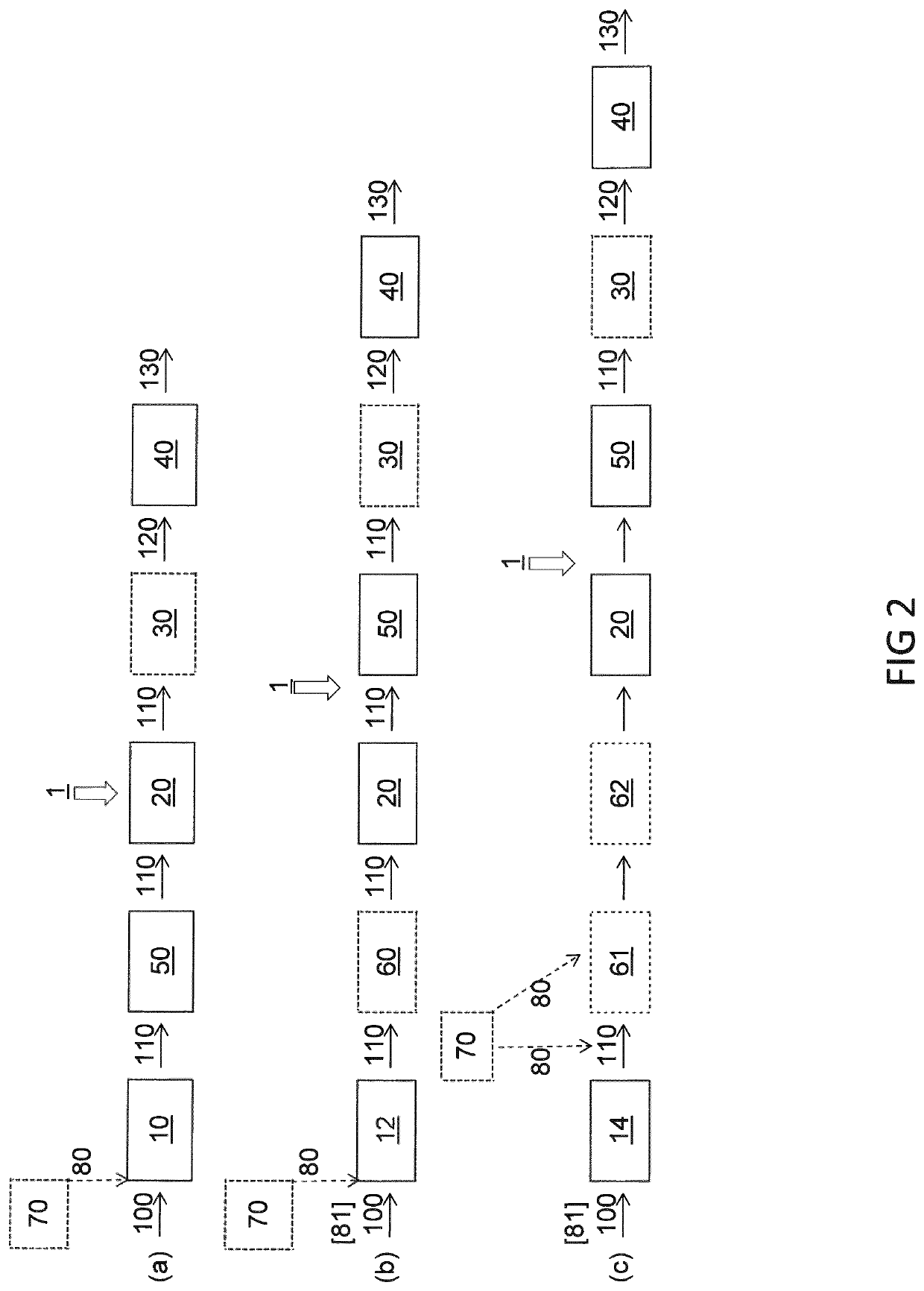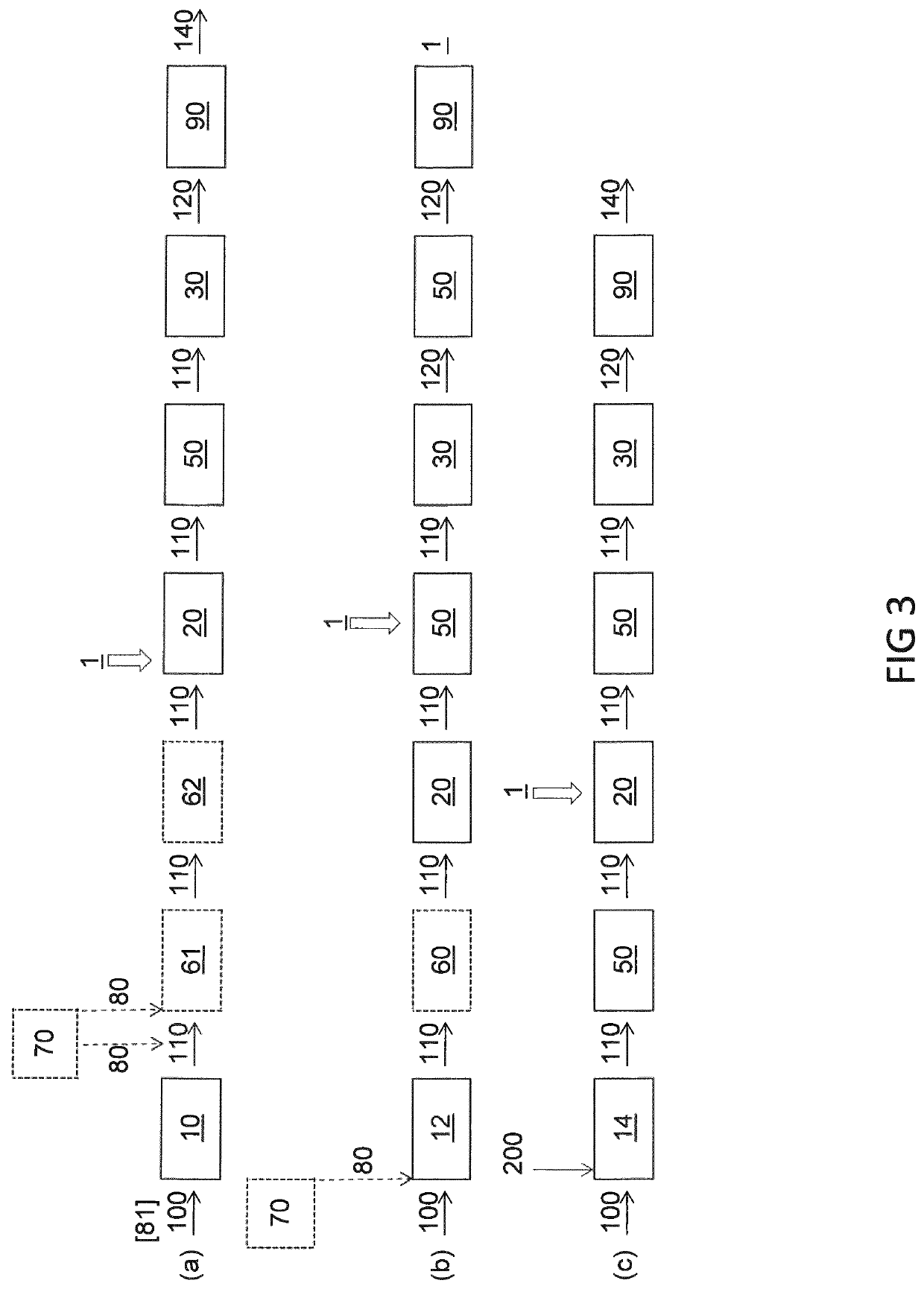Process to recycle expandable plastic materials and an expandable or expanded plastic material obtainable thereby
a technology of expandable plastic materials and plastic materials, which is applied in the field of process to recycle expandable plastic materials and expandable or expanded plastic materials obtainable thereby, can solve the problems of low value creation, high specific transport cost, and interfere with subsequent suspension polymerization, etc., and achieves reduced investment, reduced footprint, and sufficient time for dissolution
- Summary
- Abstract
- Description
- Claims
- Application Information
AI Technical Summary
Benefits of technology
Problems solved by technology
Method used
Image
Examples
example 1
[0084]A system 1 comprising a twin screw extruder 12 equipped with gravimetric dosing equipment and a pentane injection port, a first and a second static mixer unit 61 and 62, a SMR-type heat exchanger as the mixer-heat exchanger unit 20, two melt pumps 50, a diverter valve, a police filter as the melt filtration unit 30, and an underwater granulator system as the granulation unit 40 was used in this example. The feedstream 101 consisted essentially of EPS containing approximately 5.4 wt % pentane and nucleating agents as the expandable plastic material 100. A pentane loss of approximately 0.4 wt % is observed in the granulated expandable plastic material 130, which had a content of about 5 wt % pentane when no additional expansion agent was added. In part of the trial, it was confirmed that the pentane content could be increased when an addition of pentane was injected into the twin screw extruder 12.
example 2
[0085]Another system 1 also comprising a twin screw extruder 12 equipped with gravimetric dosing equipment and a pentane injection port, a first and a second static mixer unit 61 and 62, a SMR-type heat exchanger as the mixer-heat exchanger unit 20, two melt pumps 50, a diverter valve, a police filter as the melt filtration unit 30, and an underwater granulator system as the granulation unit 40 was used in this example. The feedstream 101 consisted essentially of EPS containing approximately 6 wt % pentane and nucleating agents as the expandable plastic material 100. This recycle material was further formulated by the addition of 3.5 wt % infrared absorber. The overall melt temperature was controlled to be between 170° C. and 172° C. A pentane loss of approximately 0.8-0.6 wt % pentane was observed with this processing, and thus the granulated expandable plastic material 130 had a content of about 5.2 to about 5.4 wt % pentane. A homogeneous dispersion of the infrared absorber was c...
example 3
[0086]A system 1 comprising a twin screw extruder 12 equipped with gravimetric dosing equipment, a SMR-type cooler as the mixer-heat exchanger unit 20, one melt pump 50, a diverter valve, a melt filtration unit 30, and an underwater granulator system as the granulation unit 40 was used in this example. The feedstream 101 consisted essentially of EPS containing approximately 5 wt % pentane, nucleating agents, and an anti-static coating as the expandable plastic material 100. This recycle material was further formulated by the addition of 3 wt % infrared absorber. The melt temperature at the extruder was optimized to be between 165 and 171° C., at the diverter valve to be between 152 and 154° C., and thus a final melt temperature of 152 to 154° C. could be achieved. A homogeneous dispersion of the infrared absorber was confirmed by optical microscopy.
PUM
| Property | Measurement | Unit |
|---|---|---|
| melt temperature | aaaaa | aaaaa |
| densities | aaaaa | aaaaa |
| densities | aaaaa | aaaaa |
Abstract
Description
Claims
Application Information
 Login to View More
Login to View More - R&D
- Intellectual Property
- Life Sciences
- Materials
- Tech Scout
- Unparalleled Data Quality
- Higher Quality Content
- 60% Fewer Hallucinations
Browse by: Latest US Patents, China's latest patents, Technical Efficacy Thesaurus, Application Domain, Technology Topic, Popular Technical Reports.
© 2025 PatSnap. All rights reserved.Legal|Privacy policy|Modern Slavery Act Transparency Statement|Sitemap|About US| Contact US: help@patsnap.com



